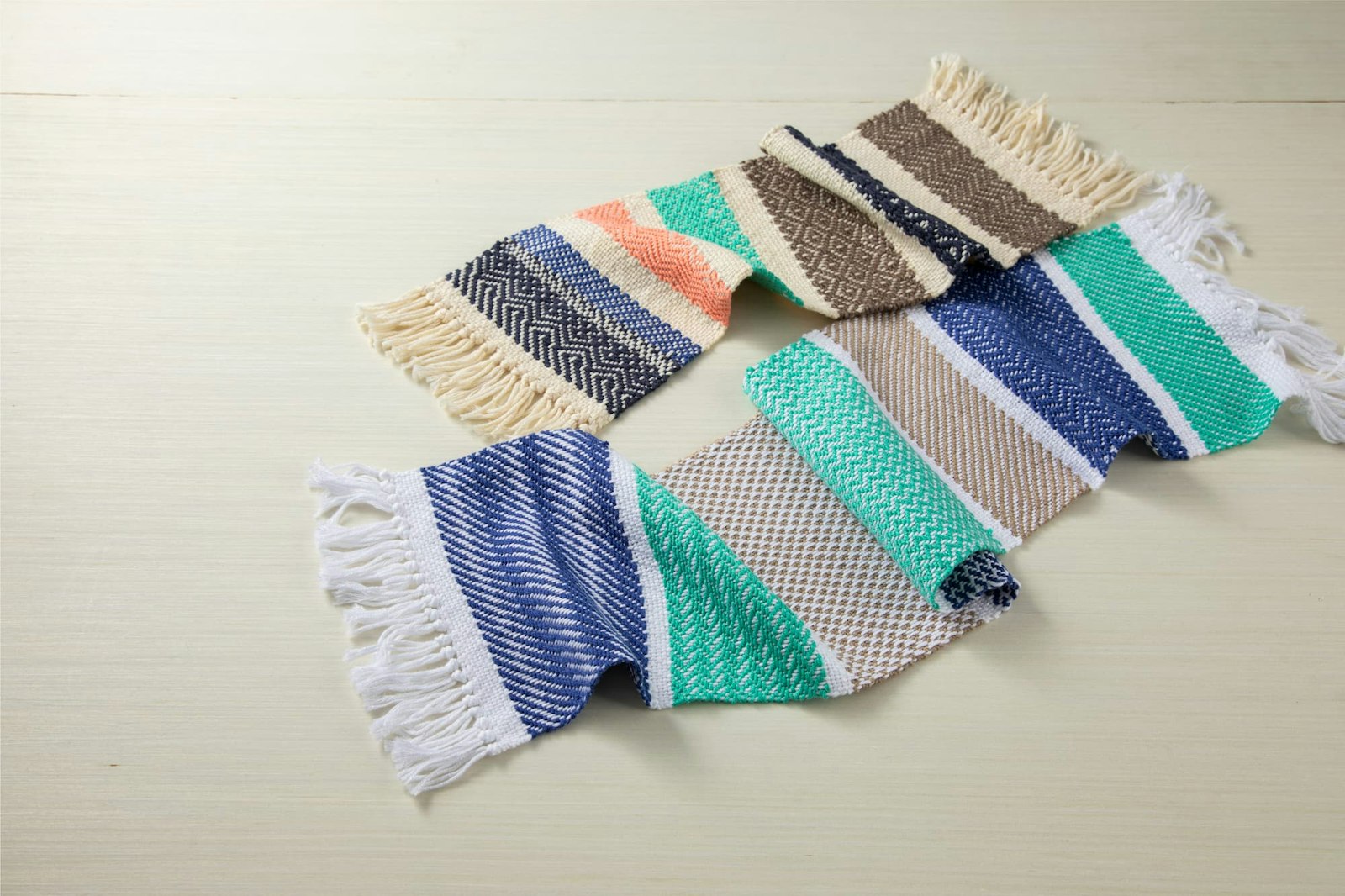Let’s talk twill! Many multi-shaft and floor-loom weavers love weaving twill—it’s relatively easy, endlessly versatile, and attractive. I don’t want to talk about floor-loom weavers, though; I want to talk about the virtues of twill and why rigid-heddle weavers should give it a go. Before we get into twill on the rigid-heddle loom, let’s take a look into what makes twill, well, twill.
When you weave plain weave, you create a grid of right angles—designs go horizontally or vertically. With twill, you’re weaving diagonal lines created by floats. When you see a twill characterized by 2 numbers with a slash between, it refers to the number of warp threads the weft goes under and over. For example, with a 1/3 twill, your weft will go under 1 warp end and over 3. The order in which you change your sheds determines which direction the twill will go, and that allows you to create diagonals, zigzags, diamonds, and more.
Now let’s talk about why you might want to weave twill instead of plain weave. First, there’s the versatility of design. With the same yarn and same loom set-up you can weave multiple patterns simply by changing the order in which you change your sheds. Along with creating patterns, the diagonals of twill have another benefit: they create a more pliable, bendable fabric that we think of as drape. If you were to weave a sample in plain weave and then use the exact same yarns to weave it in twill, the twill would be less rigid and thus fold and bend better.
You might think this drapability would make for a weaker fabric, but the opposite is true. Because we sett twill denser than plain weave, it makes for a stronger fabric. Blue jeans and sail cloth are both fabrics that need to be incredibly durable—they’re also both traditionally woven in twill.
Another benefit of twill comes from the floats. Because the weft goes over multiple threads before heading under—and being interrupted by a warp thread going in the opposite direction—you end up with a fabric with better sheen. If you’ve ever shopped for sheets and wondered what makes sateen sheets so much shinier looking than percale, it’s because sateen is woven in twill and percale is plain weave.
 Just a few of the many twill designs possible on a rigid-heddle loom.
Just a few of the many twill designs possible on a rigid-heddle loom.
We’ve talked twill and just some of its benefits, so now I'd like to clear up something about twill on the rigid-heddle loom. Many people think it’s much more complicated than weaving it on a floor loom, but I don’t think that’s true. With both looms, you need to set up your loom according to the draft and change sheds according to the draft/weaving sequence. With both looms, every single thread must be threaded carefully by hand in just the right way.
The benefit of the rigid-heddle loom is the ease and speed with which you can get your loom warped properly for twill. With a floor loom, every single thread needs to be pulled through the exact right spot in the reed and then again in the exact right heddle on the exact right shaft. It’s very easy to mix up heddles—and if you warp your loom and have warped 1 or more heddles incorrectly, it’s not always easy to rethread. (Speaking from experience, here.) With a rigid-heddle loom, you’ve got 2 heddles to warp (no reed!), and then you use a pick-up stick to “thread” the rest. Warping mistakes are much easier to fix—especially if they’re ones done with the pick-up stick. Warping a floor loom for twill takes hours—probably 3 or 4. Warping a rigid-heddle loom for twill takes much less time—I bet you could get your loom warped and ready to weave in an hour or two—even factoring in making string heddles.
So there you have it—the basics of twill and why it’s great to weave on a rigid-heddle loom. If you want to know the details on how, check out Sara Goldenberg White’s new course, Twill on the Rigid-Heddle Loom: Weave Diagonals, Diamonds, and More. She’ll give you the details on how to warp your loom, how to read drafts and weaving sequences, how to weave multiple patterns with one draft, and much, much, more.
Happy Weaving!
Christina

